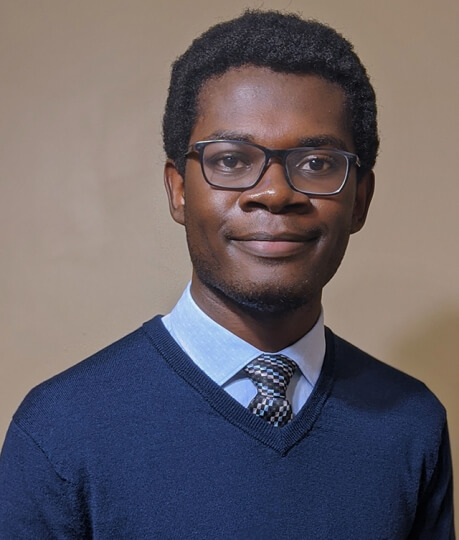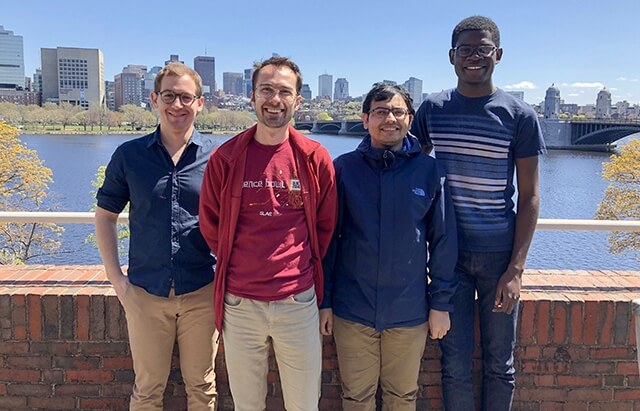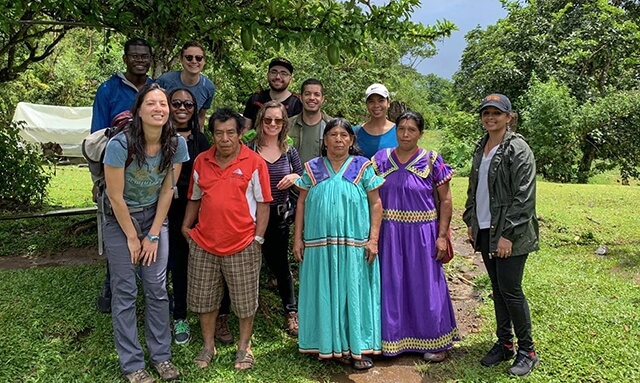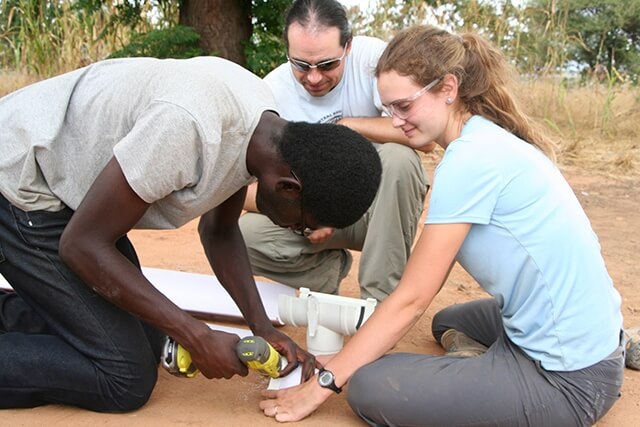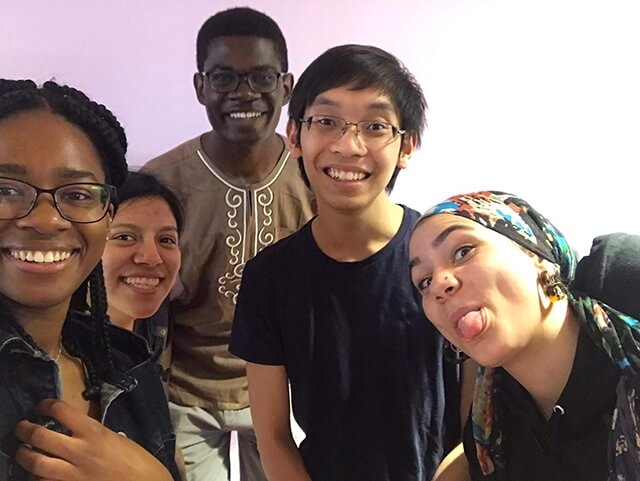When Nkaziewoh Nchinda-Pungong was in middle school, he watched a TED talk during which a surgeon 3D-printed a kidney on stage. Spellbound, he decided then and there to become a bioengineer.
A decade later, Nchinda-Pungong is well on his way. A biomedical engineering concentrator at the Harvard John A. Paulson School of Engineering and Applied Sciences and a 2021 Rhodes Scholar, he is poised to graduate in the spring and fulfill that long-held ambition.
“Biology and chemistry are interesting in themselves, and it is fascinating to learn how the human body works. But with bioengineering, you are actually able to change it,” he said. “You may hear about heart disease and think about it as an abstract problem. Bioengineering turns that into something very specific, like an engineered heart valve, that can actually address the problem.”
Using science to solve problems has been a passion for Nchinda-Pungong nearly as long as he can remember. By age 8, he was heavily involved in a robotics club and enjoyed tinkering with mechanical components.
He even launched an afterschool “Inventors Club” where he and his middle school classmates conducted simple science experiments, like making batteries out of lemons.
His interest in scientific research only strengthened at Harvard. Throughout his academic career, he’s been working in the lab of Nate Cira at the Rowland Institute on a cutting-edge bioinformatics project.
“We are looking for bacterial superheroes—bacteria that are drastically different than anything we’ve seen before,” he said.
Nchinda-Pungong with some of his labmates from the Cira Lab at the Rowland Institute. (Photo provided by Nkaziewoh Nchinda-Pungong)
Nchinda-Pungong and his colleagues heavily dilute different bacterial samples and then perform an initial round of DNA sequencing. They compare those results to an online database and, if it appears the bacteria is novel, they isolate components that seem interesting and conduct deeper genome analysis.
Identifying enzymes that have special properties—perhaps they digest a compound that is chemically difficult to dissolve—has applications in the creation of natural products, Nchinda-Pungong explained. The work could also be used in protein engineering, where scientists often search for similar proteins in bacteria that have different DNA.
Breaking new ground in research is exciting, but also involves its share of challenges, he said.
“We are looking for novel organisms, which means they’ve never been seen before. So there’s a chance that something that is not a real organism could sneak in and cause confusion,” he said.
In addition to his work in the Cira Lab, Nchinda-Pungong tackles very different bioengineering projects with the student club Global Alliance for Medical Innovation.
During a summer program in Costa Rica, Nchinda-Pungong worked with global health courses. This photo shows Nchinda-Pungong and some students from USC after a site visit to an indigenous territory. (Photo provided by Nkaziewoh Nchinda-Pungong)
He is working on a project that could enable clinicians to determine a patient’s hemoglobin level using a smartphone. Typically, to determine if a patient is anemic, doctors draw a blood sample, send it to a lab, and wait for results. But that method isn’t feasible if a patient comes to the emergency room with a hemorrhage.
Their two-pronged project seeks to enable a smartphone camera to estimate the hemoglobin content in a drop of blood based on its color (blood that is darker red contains more hemoglobin.) The other component of the project is noninvasive—using a smartphone camera to photograph a patient’s nailbed to determine hemoglobin concentration (the color of the nails can signal anemia.)
The team is striving to develop an affordable device that could be used to help patients at under-resourced hospitals in developing countries. The project fuels an interest in global health disparities Nchinda-Pungong developed through his work with Harvard’s chapter of Engineers Without Borders (EWB).
With EWB, he helped design a rainwater catchment system for a community in Tanzania, putting together models of what the system would look like and then traveling with the team to implement the project. It was an eye-opening experience.
Nchinda-Pungong drills a connection between the downspout and gutter during an EWB trip to Mkutani, Tanzania. The downspouts and gutters were eventually attached to a building to collect water running off the roof. (Photo provided by Nkaziewoh Nchinda-Pungong)
“Once I started working on EWB projects, my intention shifted from, ‘we’re building this cool thing that is going to make sure people have access to clean water,’ to, ‘why don’t they have access to clean water in the first place?’” he said. “There are all these health inequalities, but where do they come from? Why do they persist? Are we just going to take them for granted?”
Those questions inspired Nchinda-Pungong to pursue a minor in sociology.
That sociologist’s perspective helped him plan and implement engineering projects with EWB and GAMI, and it contributes to his Rhodes Scholarship plans for Oxford University.
Nchinda-Pungong is considering double master’s degrees in global health and tropical medicine, or a master’s in engineering sciences centered around tissue engineering research.
Nchinda-Pungong has also worked with the Harvard Square Homeless Shelter's street team, and this photo shows the team after one of their shifts. (Photo provided by Nkaziewoh Nchinda-Pungong)
His ultimate goal is to earn an M.D./Ph.D. and pursue a career in academic medicine with an emphasis on overcoming the health care disparities that keep the best treatments from reaching underserved patients.
“One of the challenges of tissue engineering is that there are all these awesome things you can make, like 3D-printed organs or artificial skin, but right now they are super-expensive,” he said. “As clinicians, we may be able to do these really wild, crazy things to help patients, but the sociologist in me wonders, if it costs half a million dollars, how many people can actually benefit from it? My hope is to incorporate sociology and global health perspectives to develop treatments at a much lower cost.”
And while he sees a long road ahead until he could be 3D-printing organs, Nchinda-Pungong is excited for the chance to tackle problems that really matter, at Oxford and beyond.
“To be a Rhodes Scholar, it still feels unreal. I almost feel like I’m going to wake up from a dream at some point,” he said. “I am incredibly grateful to all the people who have helped me throughout this process.”
Press Contact
Adam Zewe | 617-496-5878 | azewe@seas.harvard.edu
